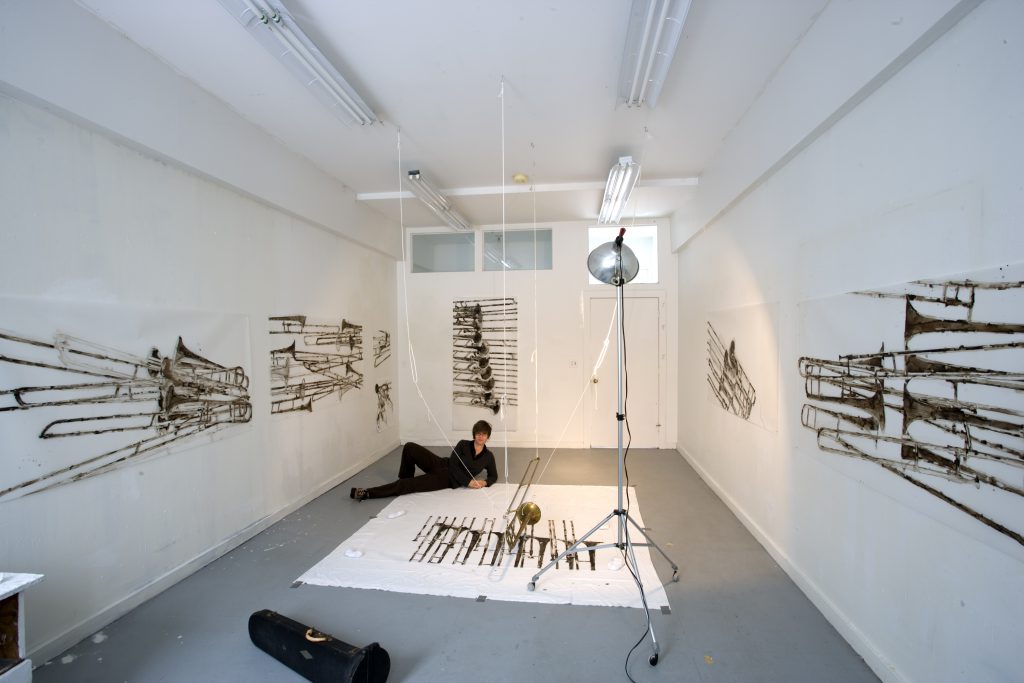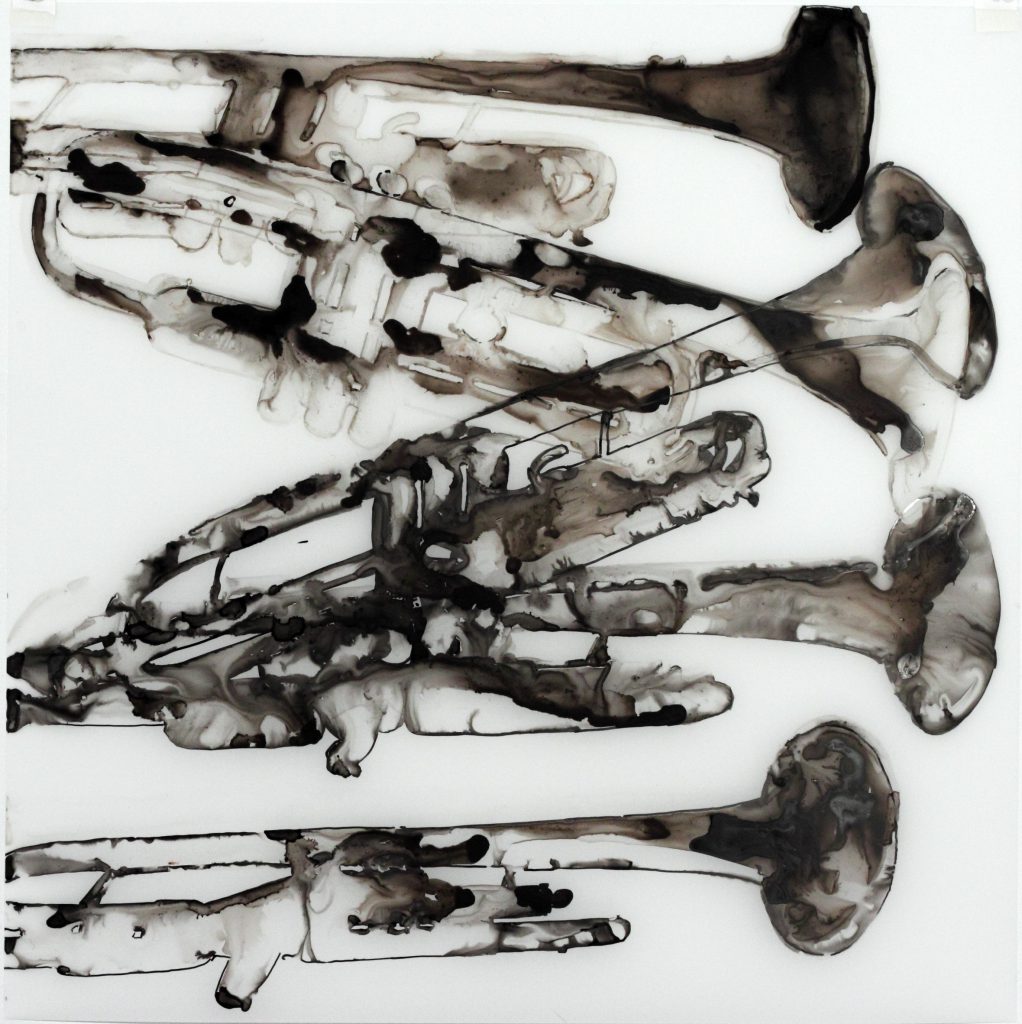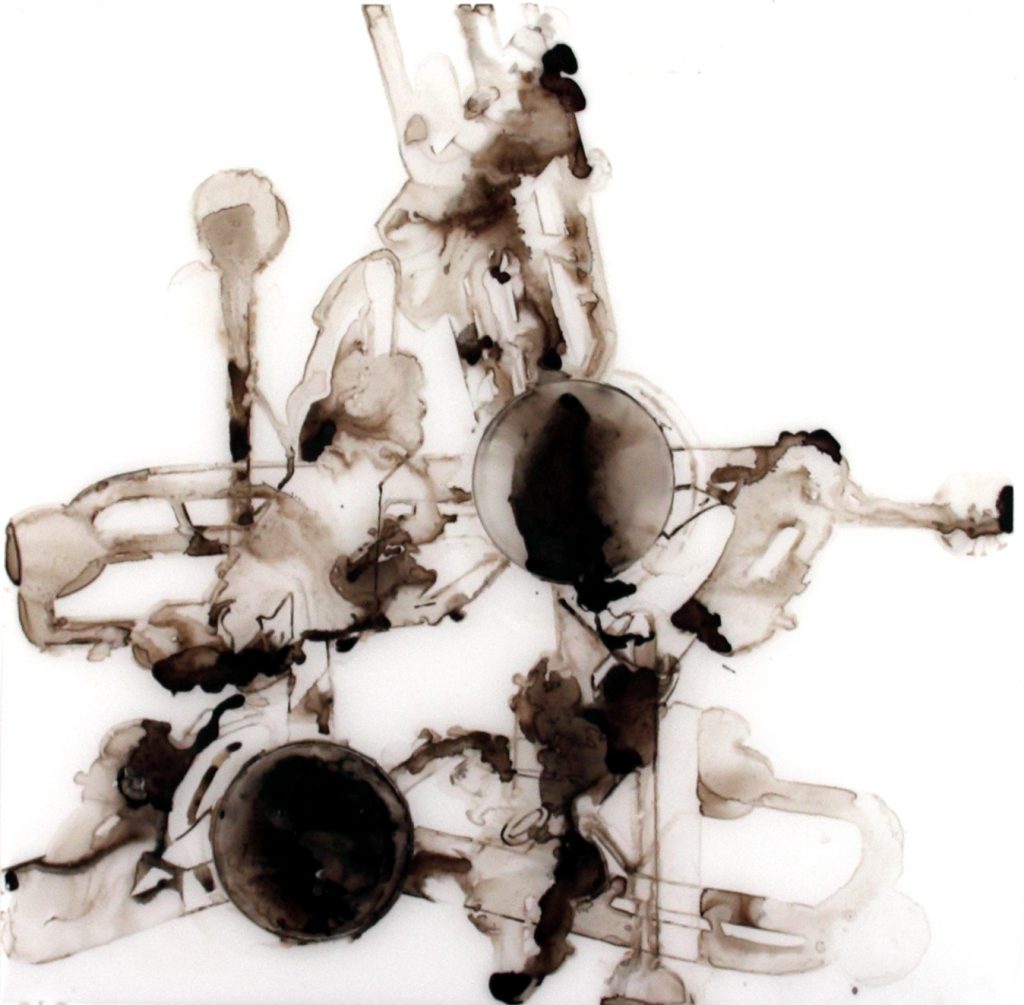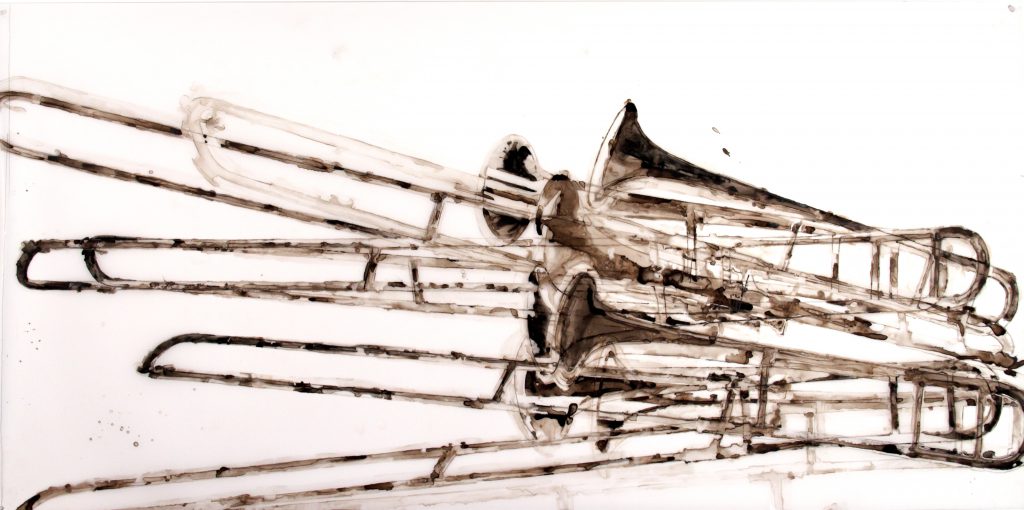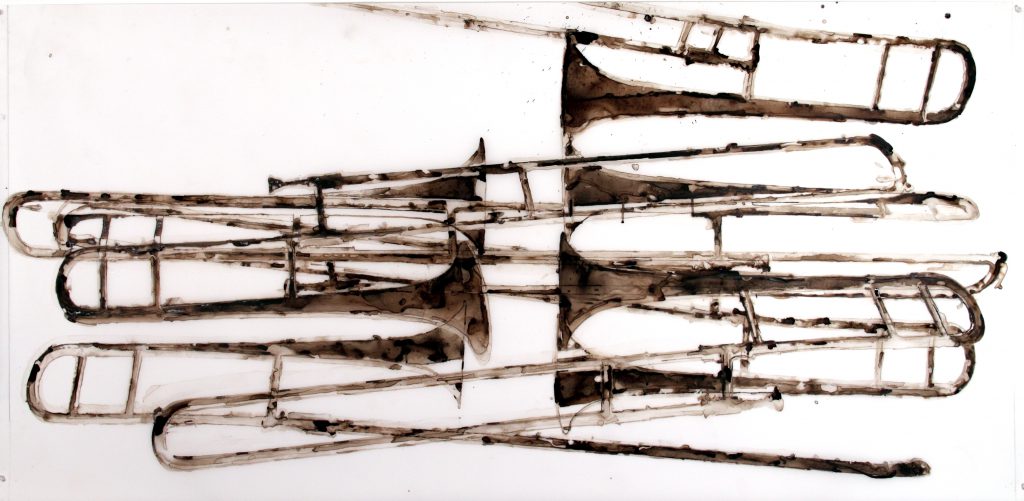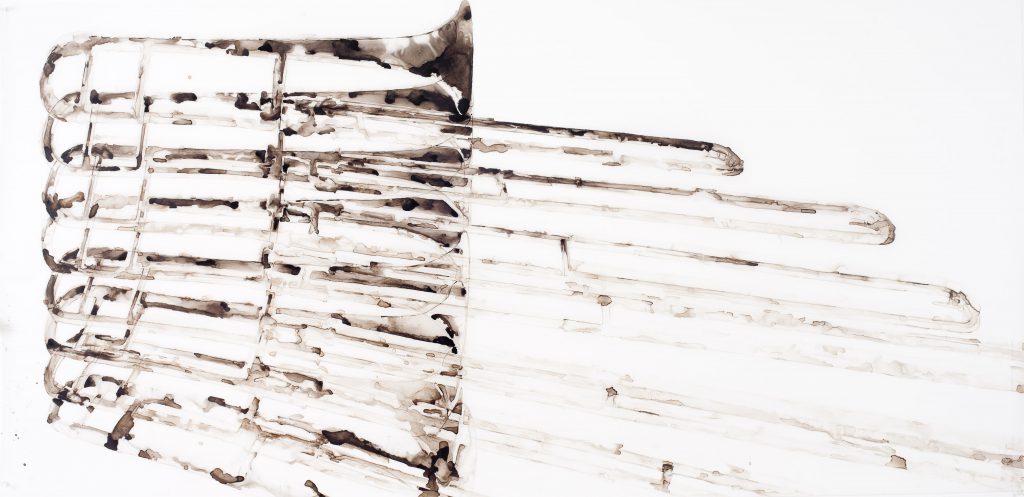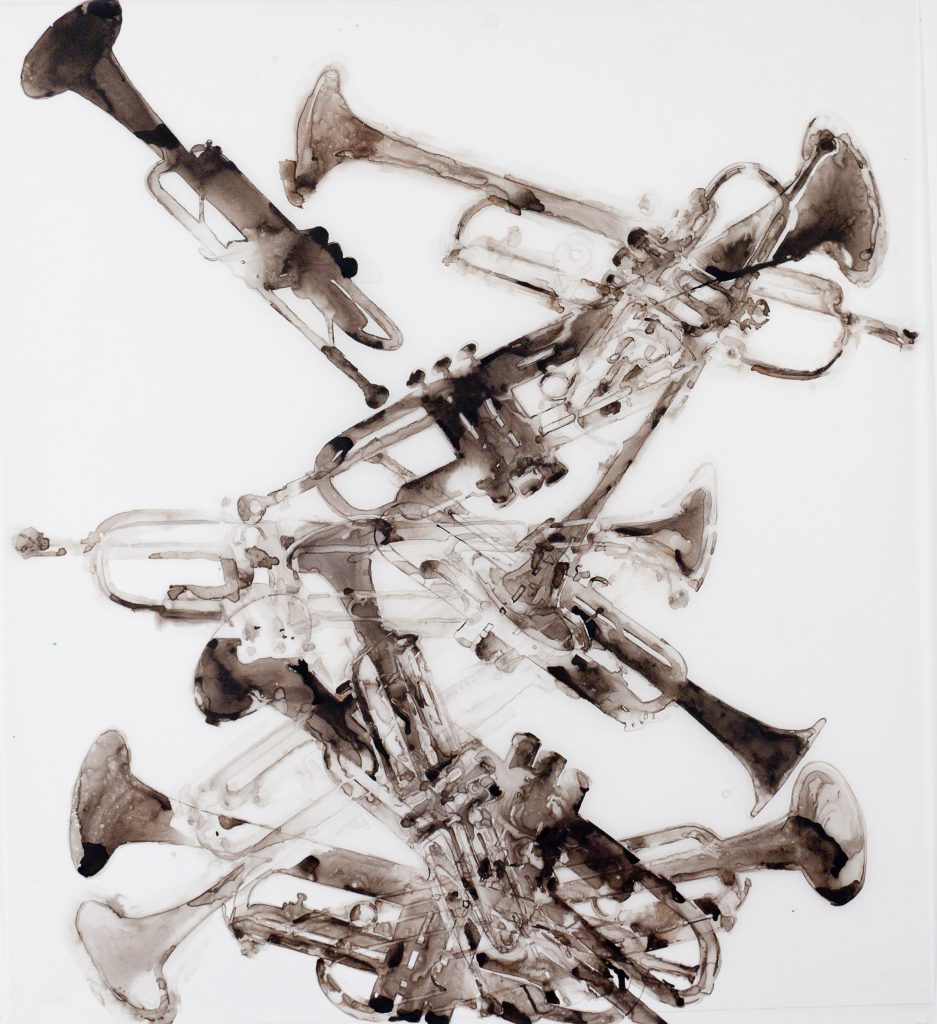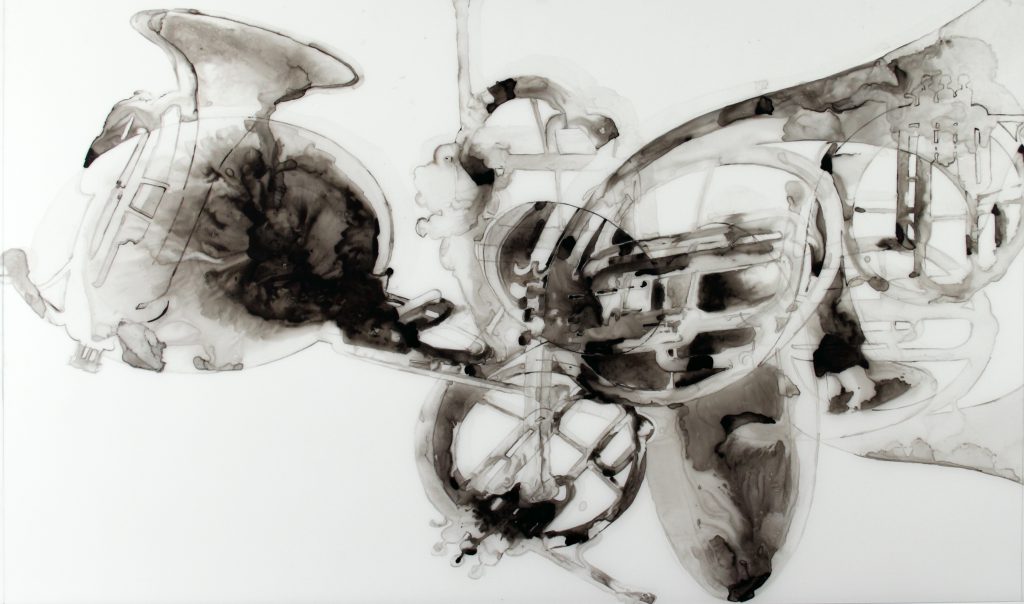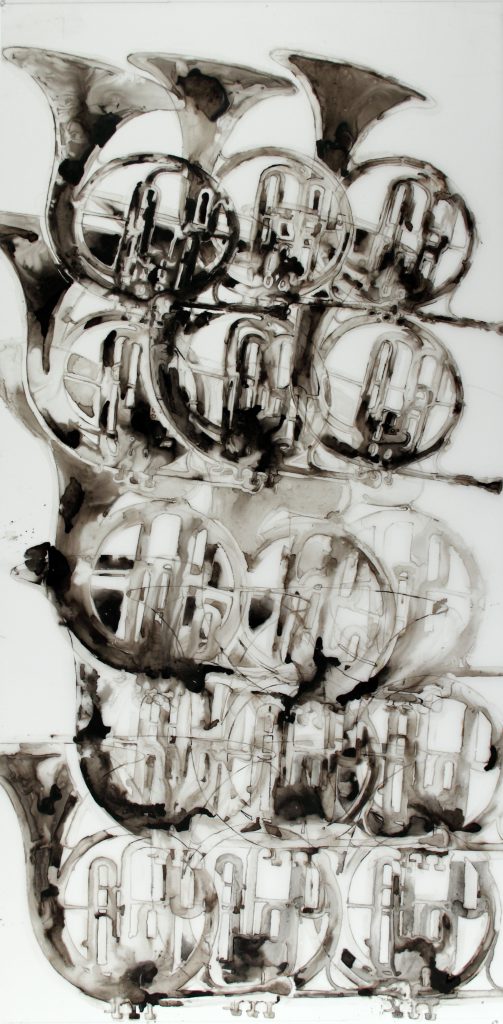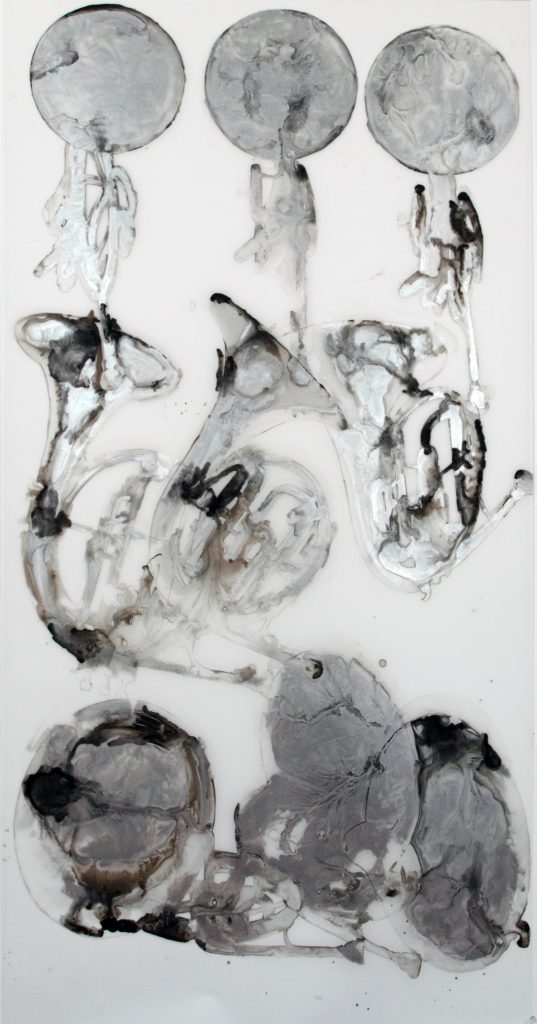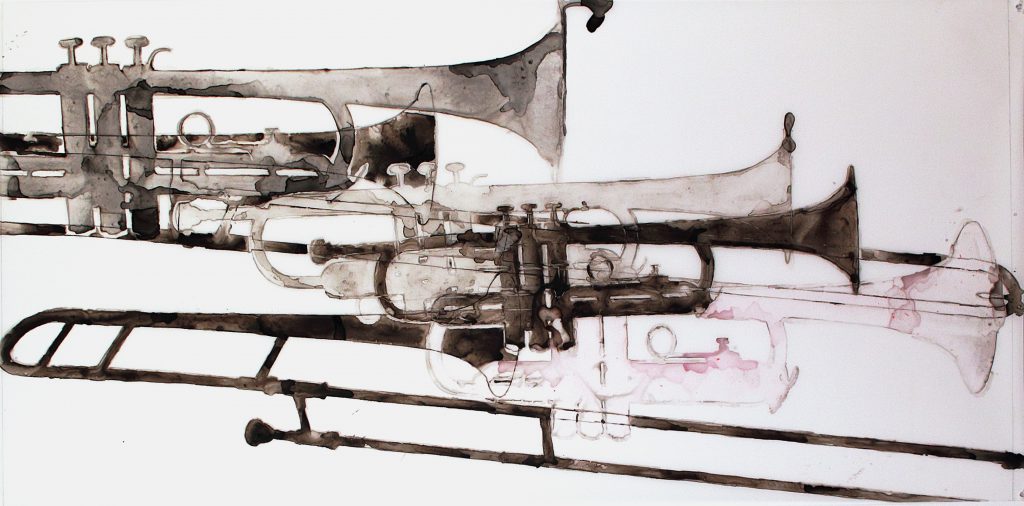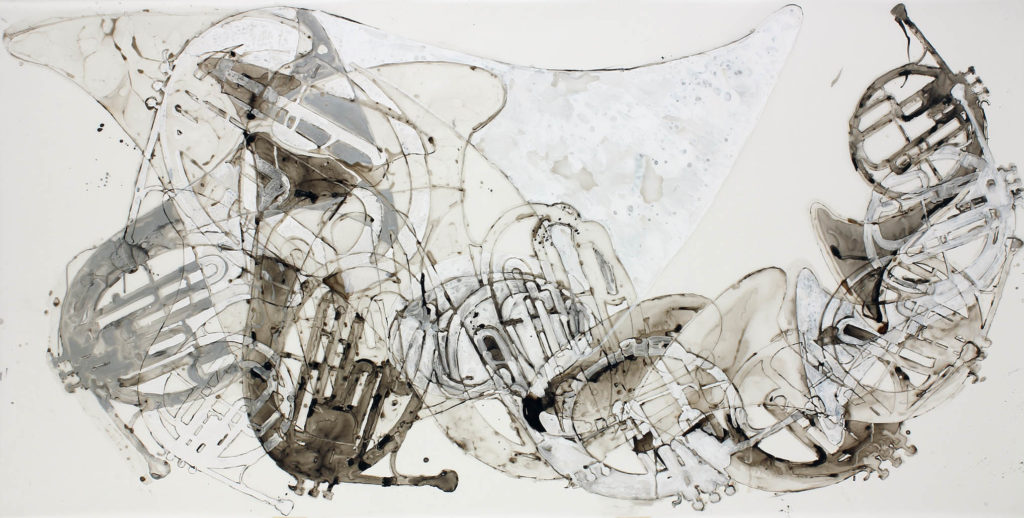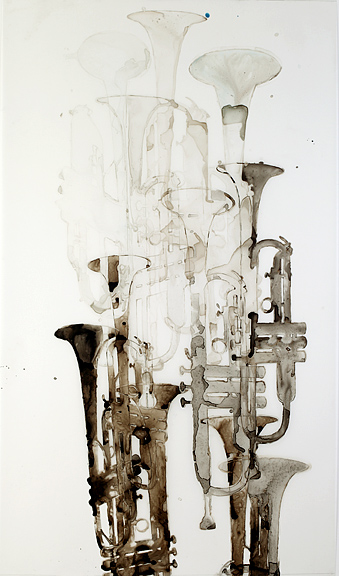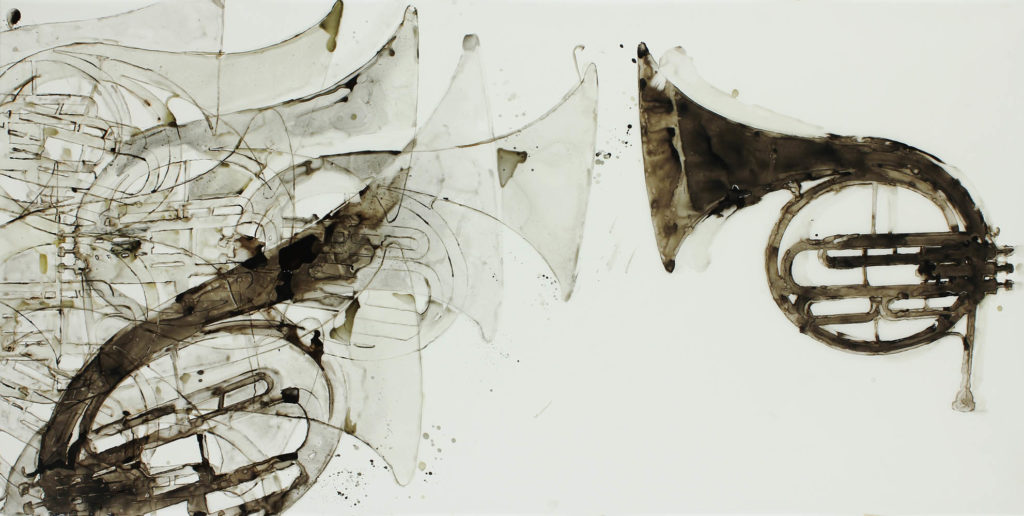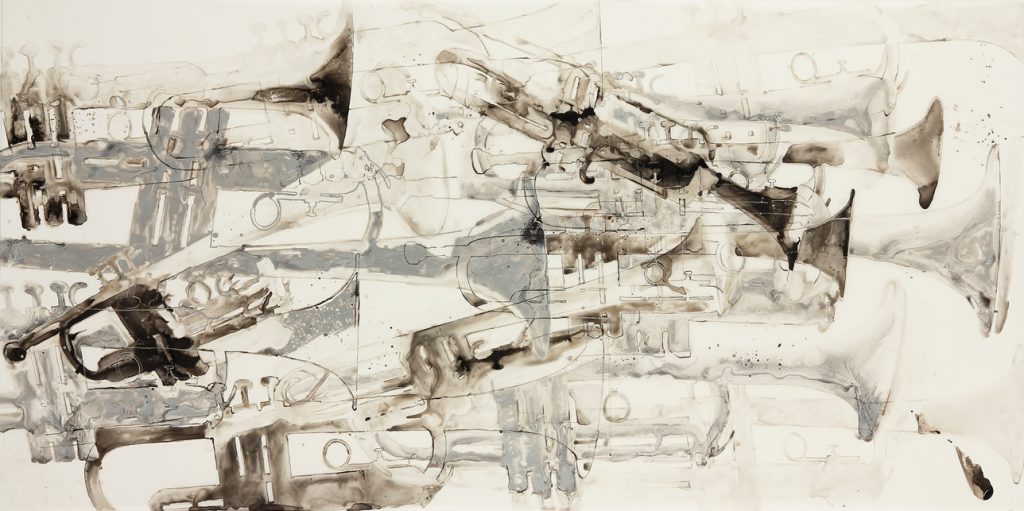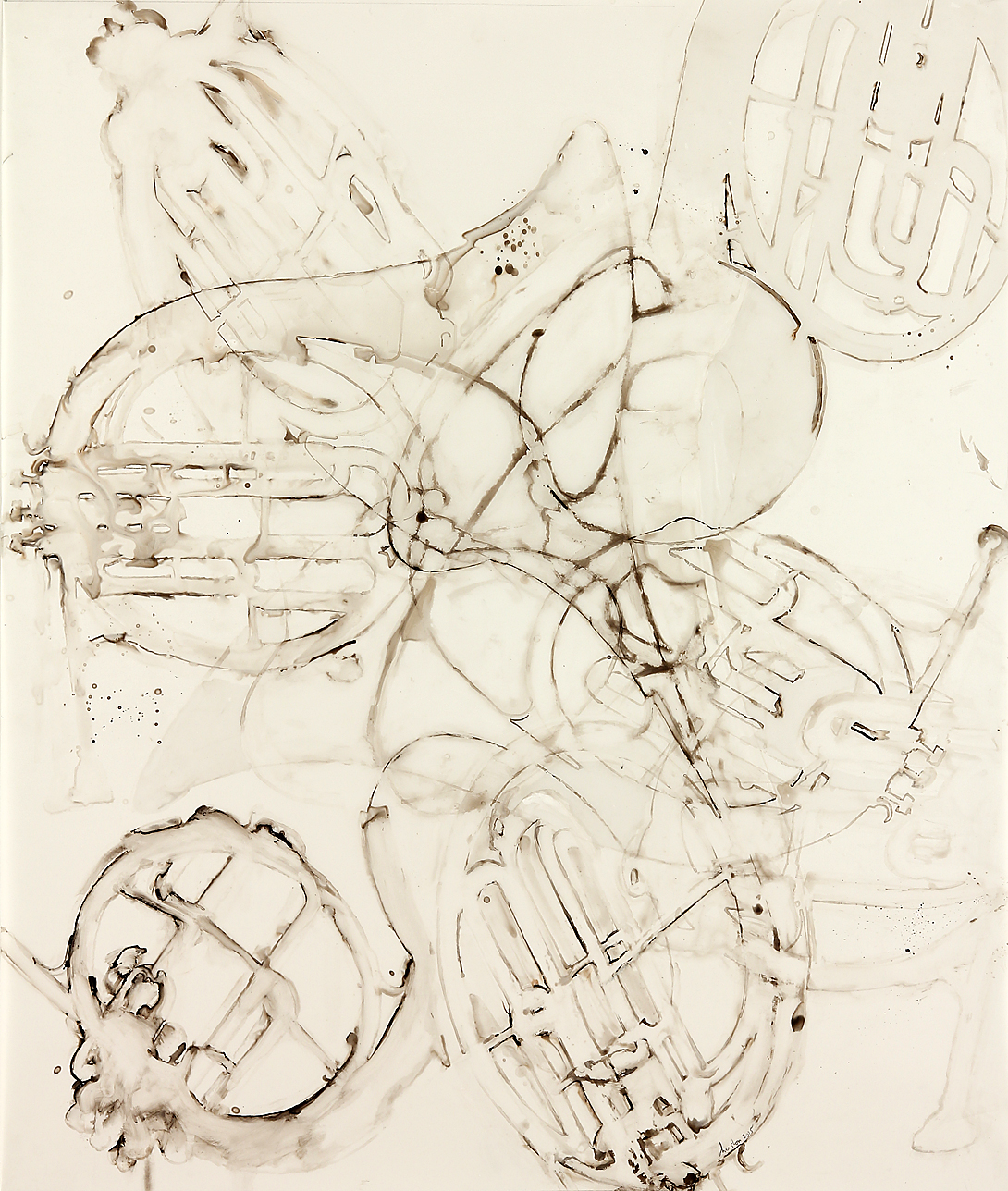
Horns
I just couldn’t look at another bicycle. I couldn’t draw another spoke. What now?
“What now?” is what happens right after a solo exhibit. In the same way as movies and books, the making stops well before the show opens. I need at least a few months for photography, curating, framing, and transport. Then…the reception! Followed by silence. It’s anticlimactic. Which leaves me in my studio with no energy and the shards left over from all that making. So I schedule some kind of beginning after this end. A plane ride, a new place, and some focused making following a show opening.
I sent myself to the Vermont Studio Center. It was February, so the ground was muddy. I was provided with a room, three meals a day, and fifty other artists to keep me company. Plus an empty studio and 30 days to fill it.
Residencies tend to be in places where the focus is on making art. Often there isn’t a lot else, which lends itself to an all-art-all-the-time schedule. I start at eight in the morning and end at six with an hour for lunch.
I covered the windows, strung a trombone from the ceiling, turned on the light and settled in to work.
I had always wanted to find a warm-up practice in art that was comparable to scales for musicians. Trombone as a subject made that a no-brainer. Repeat trombones by extending the arm. Just as the arm pulls air to draw note, I drew scales.
I showed up and did that every day until what landed on the page showed me my next move.
Why Horns? As I mentioned, they are not bikes. I had for several years been “that rose artist.” Once I met a woman who was “the flea artist,” as we each had done work with that element. I didn’t want to be the bike artist.
I looked at other things that met my visual and creative criteria: triggers body memory, complex, recognizable.
I tried a bunch of things: shoes (blobish on the page); umbrellas (big! No negative space); bedsprings (visually compelling but old fashioned and not meaningful); hand gun (too cowboy); guitars (huge); ukuleles (a one liner); bunting (too swim meet).
Then I found a used trumpet at junk sale and I was off.
I worked. Distorted by light, the trumpet remained complex: I could feel its direct relationship to me, and it was compelling to look at. I could stretch that trumpet until it didn’t look like itself anymore and it still felt like the thing it was.
The trombones started out orderly—like notes on the scale, one after another, each one stretched a little farther. Other compositions were chaotic, spilling in all directions. A tumbling mess of musical tools.
In one review I was faulted for the simplicity and directness of these works. Is the intro less artful than the crescendo? Can we only value the zenith in the arc of making? A poet once said to me, “Poetry is better than prose.” The idea infuriated me. Aesthetically, order is not better than chaos, sculpture is not better than drawing, large is not better than small. It all counts.
By the time I got home, I knew what I wanted. Fade Out 2 really did it. Using the musical structure from the end of a Motown song, in which a phrase is repeated ever more lightly until it disappears, I repeated horns gathered in repeating clusters, ever lighter.
Channeling Gorky uses the same motif, though largely erased through repetition and scale. I think of self-erasure as a signature element in Arshile Gorky’s painting, though a local museum director has assured me I am wrong. French Horn Dynamo has the satisfaction of a rondo—a circular form repeating in a circle.
